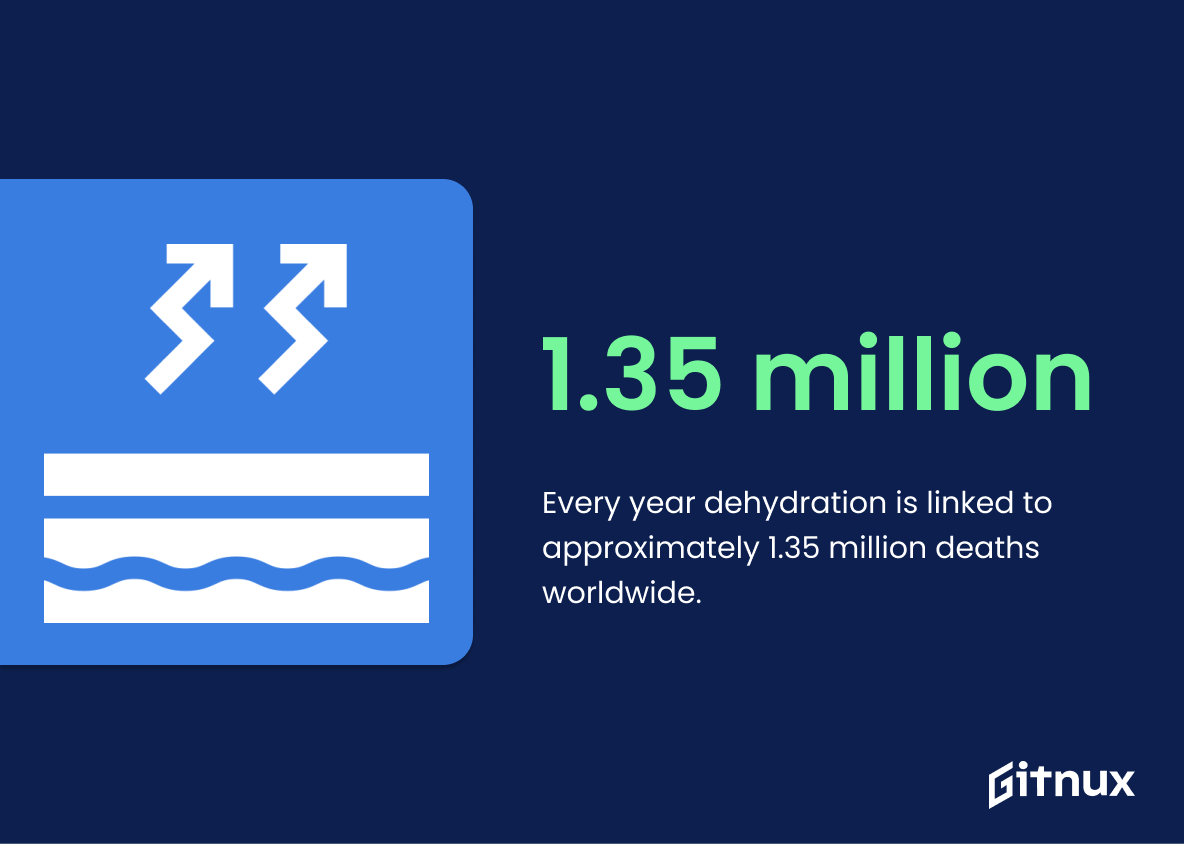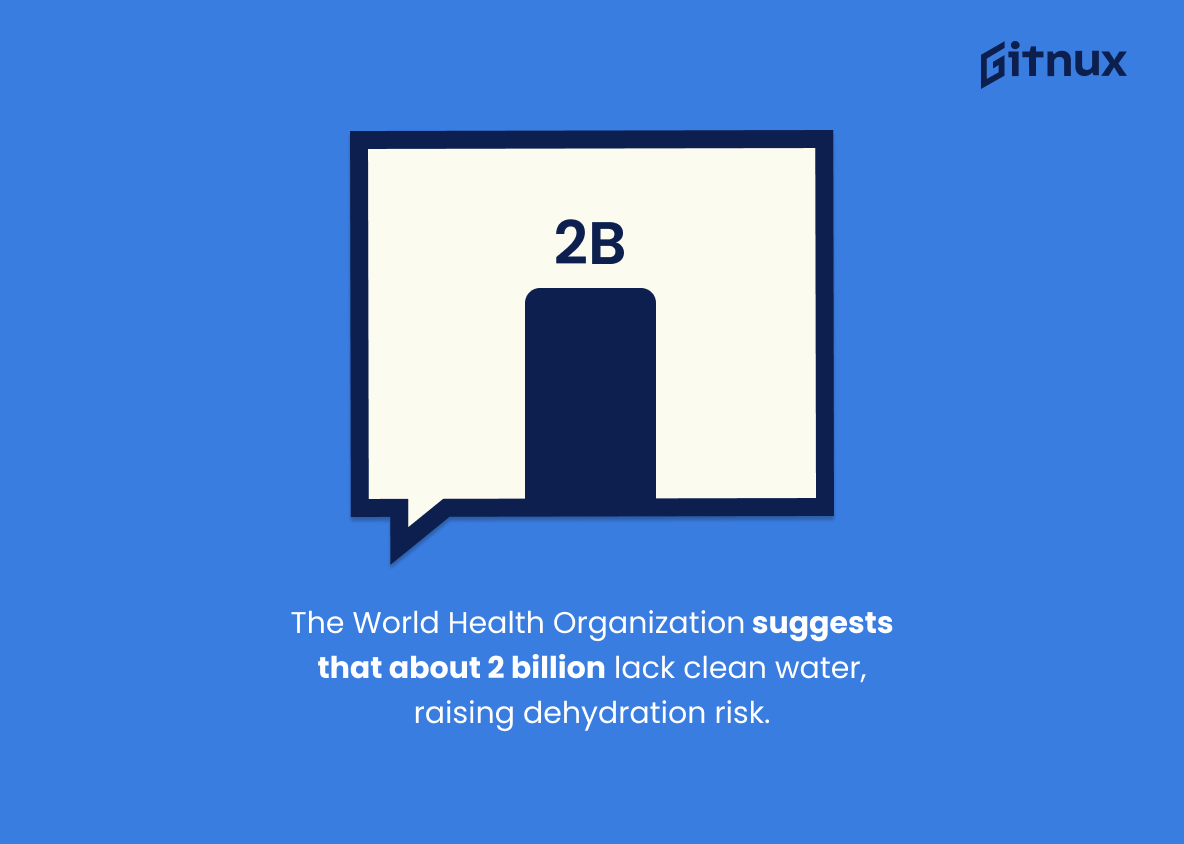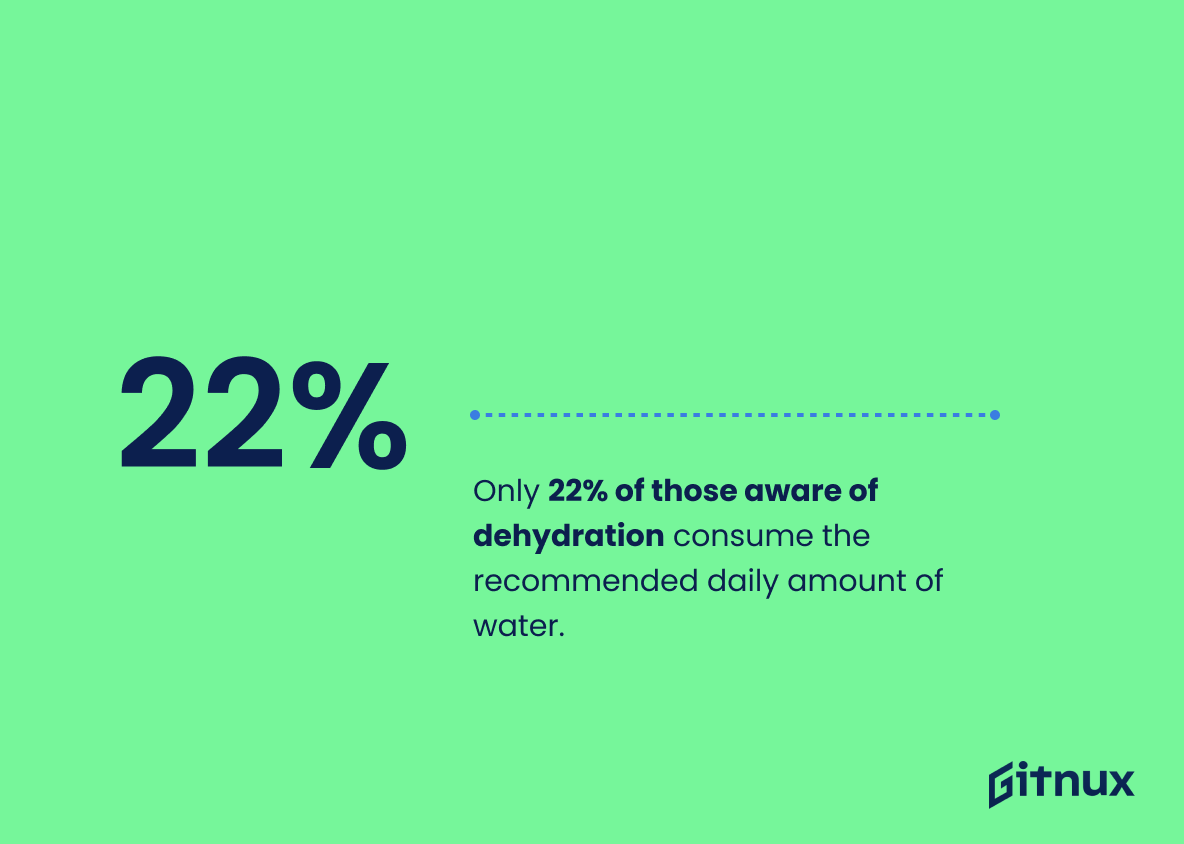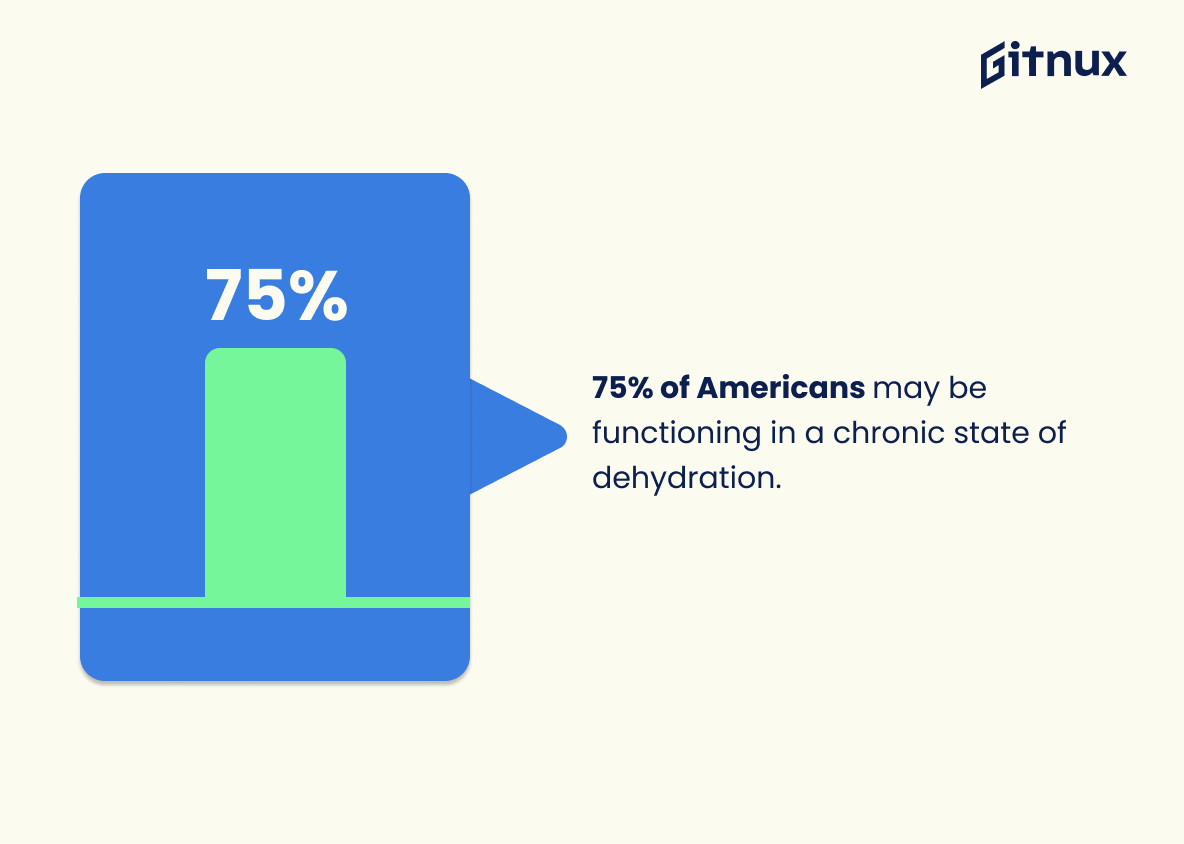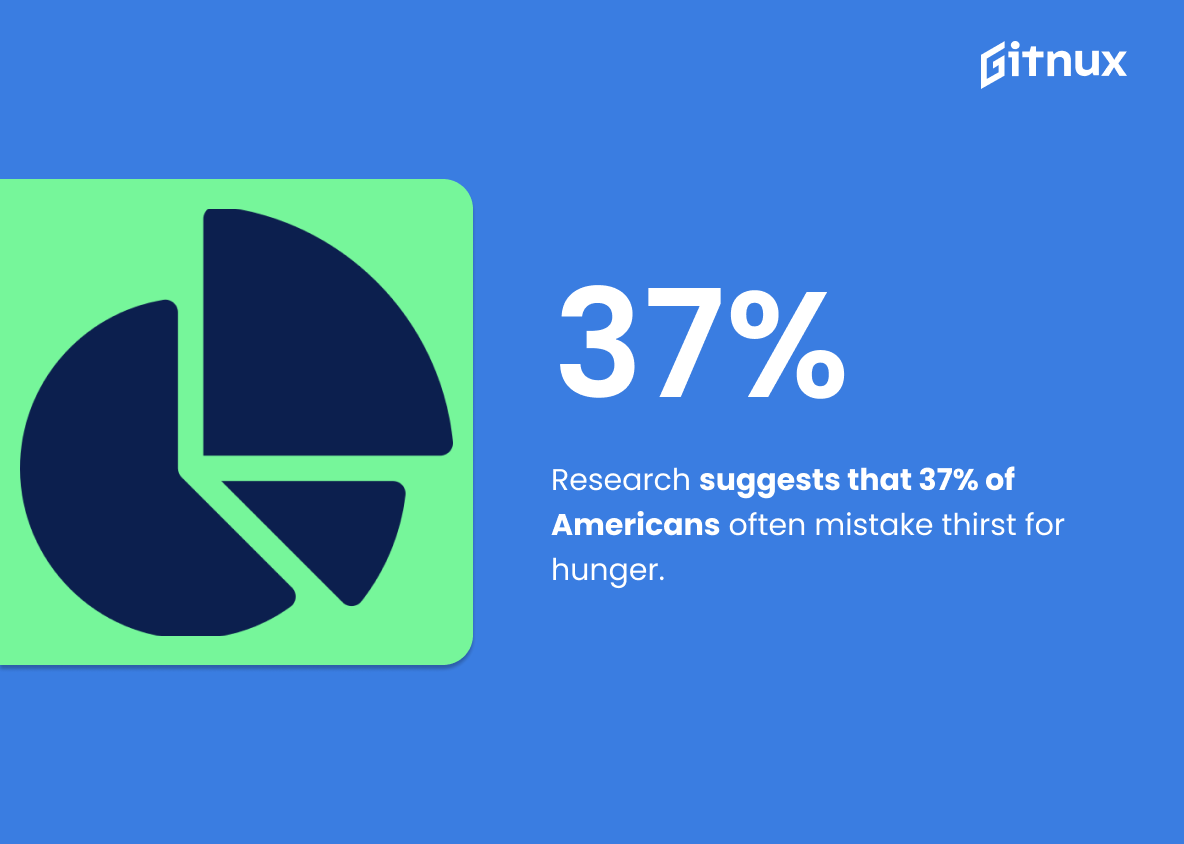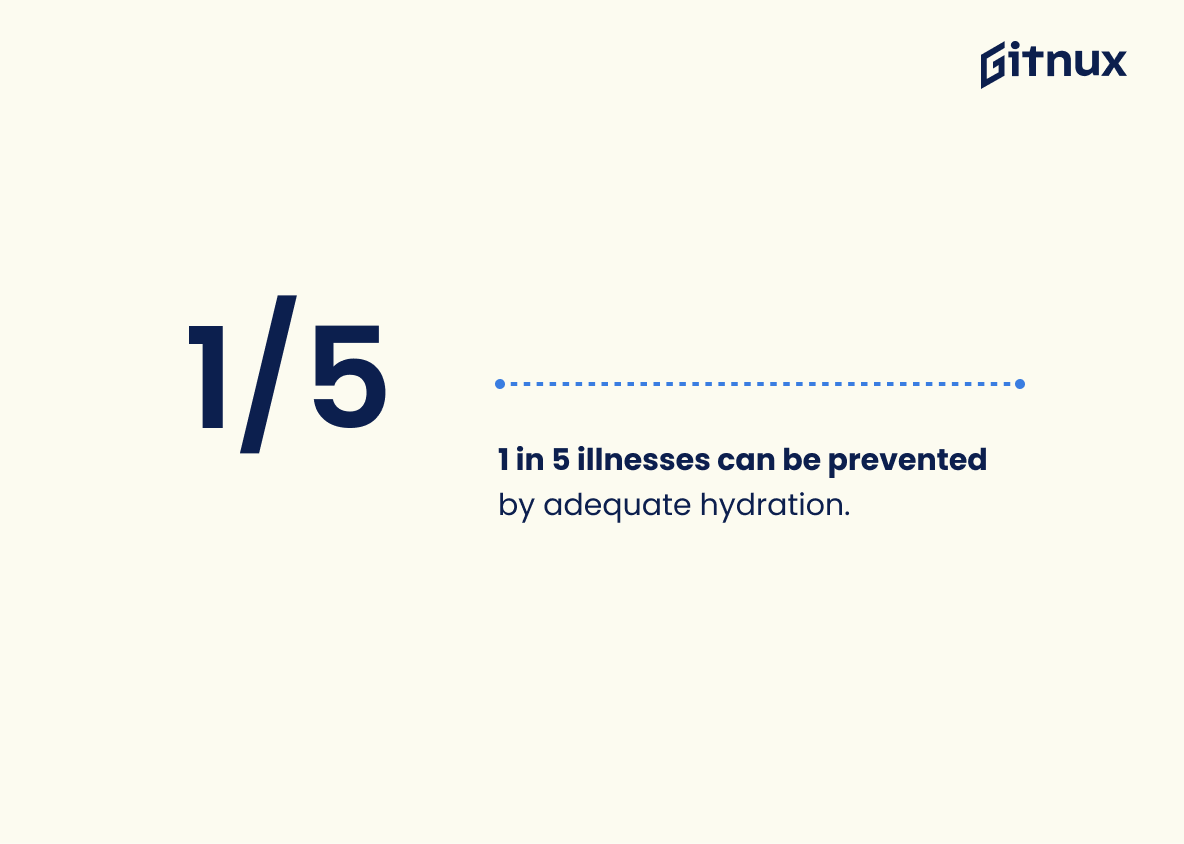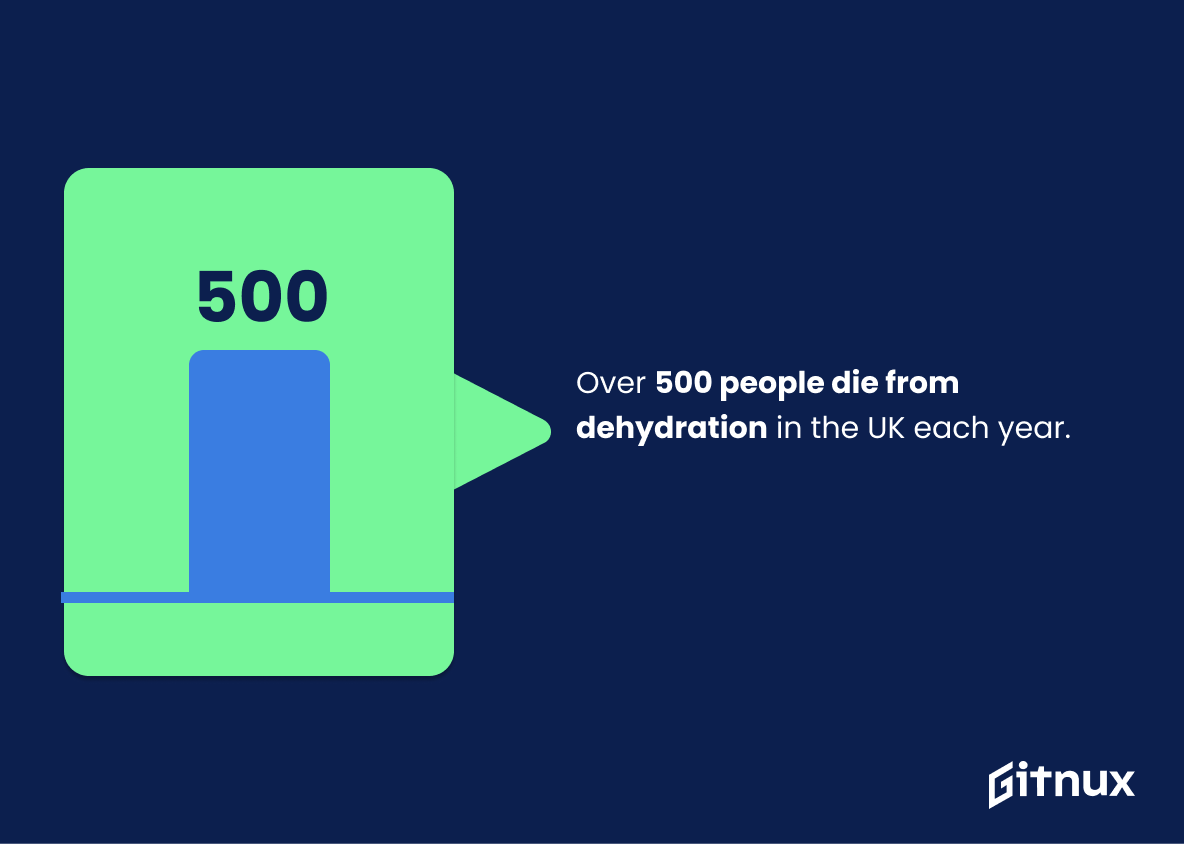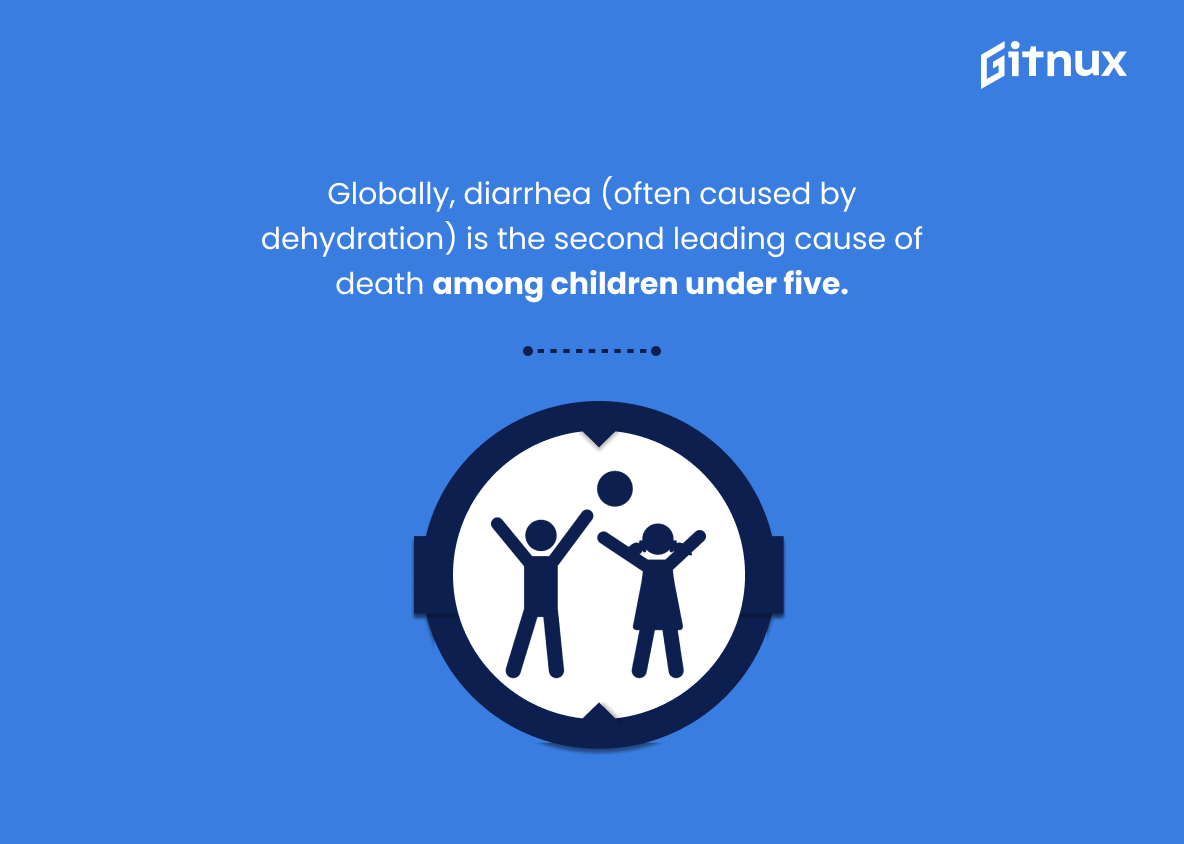Understanding dehydration, its causes and impacts, can drastically improve our overall health. Millions across the globe suffer from this easily preventable condition. Our focus today pivots towards some eye-opening dehydration statistics that underpin the gravity of this issue. This blog post will plunge into data, studies and trends surrounding dehydration.
Hopefully, this data-based exploration will not only help you grasp the prevalence and seriousness of dehydration worldwide but will also underscore the importance of staying properly hydrated. Get ready to deep dive into the world of facts and figures and learn why water is truly our lifeline.
The Latest Dehydration Statistics Unveiled
Every year dehydration is linked to approximately 1.35 million deaths worldwide.
The aforementioned statistic stands as a stark, silent sentinel, echoing a global tragedy in the realm of public health. 1.35 million deaths linked to dehydration per annum is not just another data point, but a clarion call to humankind, underscoring the urgent need for awareness, prevention and effective hydration strategies.
In the canvas of a blog post focusing on Dehydration Statistics, this figure takes center stage, marking the dreadful extent of the issue. Its abiding relevance lies in its potency to spur readers into action, stirring not just empathy but inciting a concerted push towards combating this calamity that claims millions around the globe, every single year.
The World Health Organization has suggested that around 2 billion people don’t have access to clean water, increasing the risk of dehydration.
In painting a vivid picture of dehydration statistics, nothing underscores the gravity of the problem like referencing the staggering figure from the World Health Organization. A jaw-dropping two billion people swirl in a whirlpool of clean water scarcity, acting as an alarming amplifier of dehydration risks. This image alone plunges the reader into a deeper understanding of how crucial and widespread the issue of dehydration is.
It’s a chilling reminder that access to one of life’s basic necessities – clean water – is seriously impaired for a vast swath of humanity, thereby escalating their vulnerability to dehydration. This narrative dramatically underscores the essence of the blog post on dehydration, highlighting not just its alarming prevalence, but the urgent global cry for solutions to avert a health crisis that hangs like a sword of Damocles.
Only 22% of those aware of dehydration consume the recommended daily amount of water.
Unveiling the stark reality, it emerges that a mere 22% of those cognizant about dehydration actually intake the prescribed daily quantity of water. This snippet of information injects the reader with a sense of realization, underlining the expansive gap between awareness and action.
It uncloaks an intriguing paradox wherein despite knowledge about hydration’s paramount importance, the majority are yet to envelop it into their daily regimen. This elevates the urgency and relevance of a blog centered on dehydration statistics, echoing a clarion call for bridging this disconnect and motivating towards a well-hydrated lifestyle.
75% of Americans may be functioning in a chronic state of dehydration.
In the canvas of statistics dissecting the alarming omnipresence of dehydration, a standout color splashed boldly is the insight that a staggering 75% of Americans might be entwined in a relentless grip of chronic dehydration. Needless to say, this powerful stat sends an urgent call to refocus the lens on our hydration habits.
This highlight not only underscores the prevalence of fluid deficiency across the nation but also hints at an undeniable indifference to the vital role water plays in ensuring our bodies function optimally. In a blog about dehydration statistics, this eye-opener can turn corners of complacency into avenues of action, inspiring readers to reassess their water intake against the backdrop of potential health issues. It spotlights an ignored reality and paints a compelling picture for the need to intensify public health efforts about hydration awareness.
But the tone doesn’t have to be all doom and gloom. On the flip side, it indicates immense potential for proactive change that can affect three-fourths of our population. When shared in a statistics-based blog post about dehydration, this data can reverberate as both a wake-up call and a call to action, nudging readers towards a healthier, more hydrated life.
In senior populations, dehydration accounts for a 5-10% mortality rate.
Spotlighting the reality that dehydration contributes to a significant 5-10% mortality rate in senior populations underscores the dire need for proactive hydration strategies, especially for our elderly loved ones. These figures, somberly woven into the fabric of dehydration statistics, serve as a wake-up call that quenches our complacency about the dangers of inadequate hydration, and fuels our commitment to proper hydration and elder care. In the realm of dehydration narratives, this statistic forms a critical plot point that drives home the gravity of the situation, effectively stirring readers to action.
Research suggests that 37% of Americans often mistake thirst for hunger.
Unveiling a compelling piece of trivia, the research illustrates that a staggering 37% of Americans frequently confuse their body’s signal for thirst as a craving for food. This unexpected crossover of biological cues casts a spotlight on alarming dehydration trends.
Offering a profound insight into the prevalence of unintentional under-hydration, this statistic depicts a noteworthy implication about our understanding and response to body hydration needs. The fact that over one-third of people misinterpret their thirst as hunger, provides a spectacular backdrop to discuss dehydration and its stealthy prevalence within the blog post on Dehydration Statistics.
50% of children admitted to the hospital with gastroenteritis suffer from dehydration.
Highlighting the insight that half of all kids hospitalized due to gastroenteritis are detected with dehydration underscores the striking correlation between these two medical conditions. This numerical fact throws a spotlight on the sheer number of dehydration cases linked to this common pediatric illness.
In a blog post centered around dehydration statistics, this nugget of information paints a vivid picture of the potential severity of dehydration, bringing into focus the magnitude and critical nature of the issue. It also underscores the relevance of prompt detection and counter-action to ensure the health and wellbeing of our younger population.
1 in 5 illnesses can be prevented by adequate hydration.
Delving into this illuminating statistic, we identify that it underscores the key role hydration plays in bolstering health maintenance and disease prevention. It reveals that a fifth of illnesses—a not insignificant proportion—could be averted simply through keeping adequately hydrated. In a blog post revolving around dehydration statistics, this data acts as a spotlight, vividly illuminating the often overlooked but crucial impacts of insufficient water intake on our health.
Further, it provides a compelling argument and a rallying point for advocating healthier hydration practices, creating a more profound understanding of the consequences of dehydration. It is a potent reminder that, often, in the pursuit of robust health, the value of a simple glass of water is underrated.
Over 500 people die from dehydration in the UK each year.
In a world where clean, fresh water is within arm’s reach for many of us, it is deeply haunting to realize that over 500 people succumb to dehydration each year in the UK alone. This stark figure underscores the importance of raising awareness about hydration, vibrantly outlining the dangers of neglecting something as basic as drinking water.
Moreover, it calls into focus the existing gaps in health education or healthcare that allows such preventable deaths. Reflecting on this data in a blog post about dehydration statistics can prompt crucial conversations on individual and collective efforts needed to avert more lives being claimed by dehydration.
Globally, diarrhea (often caused by dehydration) is the second leading cause of death among children under five.
This astounding statistic serves as an alarming wakeup call bringing to light the grave implications of dehydration and its underappreciated influence on global health. Encapsulating the profound impact that a seemingly simple condition like dehydration can have on the most vulnerable population segment, children under five, it humanizes the discussion on dehydration, moving it from a mere statistical conversation to a pressing global health issue.
It positions dehydration, often overshadowed by other health concerns, squarely in the spotlight. This revelation can act as a fulcrum, leveraging the attention and resources necessary for prevention, education, and intervention, hence emphasizing the urgency of addressing dehydration in this blog post about Dehydration Statistics.
During physical activity, dehydration of greater than 2% of body weight increases the risk of heat illness.
In light of a post exploring dehydration statistics, envision the human body like a complex machine, operating optimally within a well-lubricated environment. Physical activity, albeit beneficial for health, enflames the body’s internal temperature, necessitating a cooling mechanism—in this case, sweating. Now, imagine this cooling system not receiving ample replenishment, signifying greater than a 2% body weight loss due to dehydration.
Under such circumstances, the situation escalates from a mere drop in performance to a perilous increase in heat illness risk. Therefore, the mentioned statistic stands as a crucial touchstone for understanding the severity of dehydration. It underlines the imperative nature of proper hydration, especially during strenuous exertions, highlighting the slim margin between maintaining bodily functions and slipping into potential danger.
More than 25% of marathon runners have experienced exercise-associated hyponatremia, a form of dehydration.
In a blog post centered around Dehydration Statistics, the compelling fact that over a quarter of marathon runners have encountered exercise-associated hyponatremia situates dehydration not as a mere inconvenience, but a genuine health concern actively confronted by athletes. It emphasizes how prevalent and consequential dehydration can be, especially in strenuous activities like marathons.
It adds weight to the discussion, urging readers to vigilantly monitor their water levels during exercise. So, beyond simply sipping water on a hot day, the statistic takes the concept of hydration to a deeper level of understanding, stressing its crucial role for peak physical performance and health.
Nearly 80% of working Americans say they don’t drink enough water, potentially leading to chronic dehydration.
Segueing into the startling revelation that nearly 80% of working Americans confess to an inadequate water consumption, our blog post on Dehydration Statistics highlights an overlooked phenomenon with repercussions in the realms of productivity, personal health, and overall wellbeing. This notable figure prompts a deeper probe into the enigma of chronic dehydration, which lingers subtly yet pervasively in our busy, go-getter society.
It’s an alarming indicator that behind the glitz and grind of the American work ethic possibly lurks a staid neglect of personal health, rendering it an essential statistic in our exploration of the spectrum of dehydration scenarios. By including it in our discussion, we shed light on common behaviors and their consequences, thereby underlining our blog’s commitment to health awareness grounded in solid data.
Heat-related illnesses account for over 9,000 American deaths since 1979, with dehydration being a major factor.
Delving into the chilling depth of the available data, one finds an alarming revelation. The sinister entanglement of heat-related illnesses and the harsh bite of dehydration becomes shockingly evident. Since 1979, the grim reaper has claimed over 9,000 American lives where dehydration was the puppet-master behind the scenes.
Within the context of a blog post centered around Dehydration Statistics, this figure throws a stark spotlight on the indelible impact of such a seemingly innocuous villain. It not only underlines the disturbing magnitude of the issue at hand but also breaks open the common misconception of dehydration as a benign inconvenience, revealing its true, fatal potential.
Dehydration is the cause of 1 in 10 consultations for sickness in returned international travellers.
Highlighting this fascinating nugget of information, it becomes startlingly clear that dehydration doesn’t just remain a concern for desert wanderers, intense athletes, or those suffering from health conditions. Indeed, it weaves its invisible and often underestimated thread into the fabric of international travel, shaping the wellbeing of globetrotters worldwide. As per this statistic, every tenth individual knocking on the doctor’s door post-holiday isn’t grappling with unfamiliar cuisine or complex bugs – the call to arms is a startlingly simple adversary: dehydration.
This repositions travel sanitation advice, nudging us to consider just how critical a simple water bottle can be alongside our passports and visas. This freshly presented dehydration data has the power to revitalize public communication in travel health; it’s an understated reminder aimed at those adventurers on their globe trotting missions – keep up with hydration, or join the queue at the post-travel clinic.
Dehydration contributes to 3% of deaths in elderly people in the USA.
Diving into the deep waters of dehydration statistics, the chilling revelation that 3% of elderly deaths in the USA occur due to dehydration cannot be brushed aside. This figure replicates the profound importance of hydration, especially in the mature populace, and sets the tone for a critical examination on the issue. It underscores the pressing need for efficient hydration strategies and heightens awareness about the dire consequences of inadequate water intake amongst the elderly.
In the grand puzzle of combating dehydration, this statistic is an indisputable key piece. This small percentage, a seemingly insignificant figure, carries the weight of thousands of preventable deaths, painting the gravity of the situation and underlining why dehydration should not be taken lightly.
More than 4 million people die each year due to water related diseases, with majority being due to dehydration.
This alarming number – over 4 million lives lost annually due to water-related diseases, predominantly dehydration – underscores the grave circumstances and human struggles often overlooked. In a blog post about Dehydration Statistics, it casts a profound light on the urgency and gravity of this health concern.
It not only speaks volumes about the pressing need for adequate water and sanitation interventions globally, but also intensifies the importance of increasing global awareness, promoting hydration habits, and instigating comprehensive health initiatives. By doing so, the statistic can provide valuable insights for advocacy, policy-making and strategic interventions, hence, leading us toward a healthier global populace.
People can lose between 2 to 3 liters of water per hour during intense exercises, increasing chances of dehydration.
Diving into the realm of Dehydration Statistics, we unearth a fascinating nugget of information that highlights the precarious dance between physical exertion and hydration. The fact that people can lose between 2 to 3 liters of water per hour during intense exercise serves as a potent reminder of the need for diligent hydration. This hefty loss of fluid has a direct role in heightening the risk of dehydration.
So, whether you’re a gym enthusiast or a marathon runner, keeping this statistic in mind might just be the key to maintaining your performance and health. Ensuring that hydrating practices go hand-in-hand with your strenuous routines could be the secret recipe to escaping the clutches of dehydration. Perhaps it’s time we start viewing our water bottles with a newfound respect.
Conclusion
Understanding the severity and prevalence of dehydration, as demonstrated by the overwhelming statistics, is crucial for public health. Ensuring we are all informed about the importance of proper hydration will support overall health and aid in preventing unnecessary hospitalizations.
Implementing education programs about the signs, symptoms, and dangers of dehydration can significantly reduce these statistics and promote improved health and well-being for all. Let us all remember; water is life, and staying sufficiently hydrated should never be taken for granted.
References
0. – https://www.www.medicine.mcgill.ca
1. – https://www.www.dailymail.co.uk
2. – https://www.www.quenchwater.com
3. – https://www.www.meandermc.nl
4. – https://www.www.medicaldaily.com
5. – https://www.www.travelhealthpro.org.uk
6. – https://www.www.cdc.gov
7. – https://www.academic.oup.com
8. – https://www.pubmed.ncbi.nlm.nih.gov
9. – https://www.www.who.int
10. – https://www.www.ncbi.nlm.nih.gov
11. – https://www.medlineplus.gov
12. – https://www.www.water.org.uk
